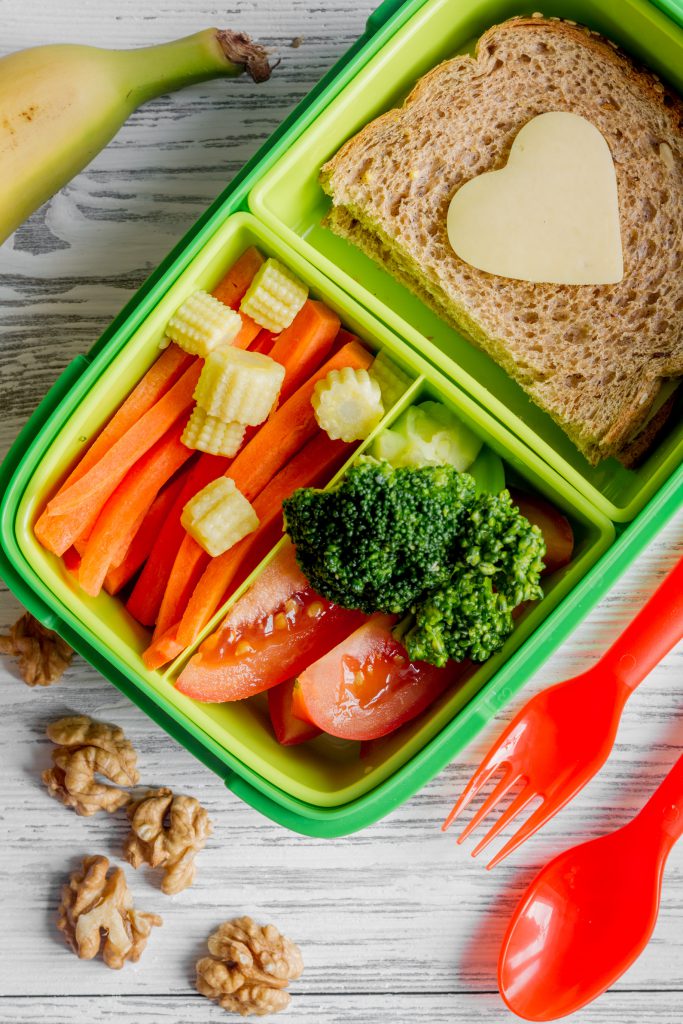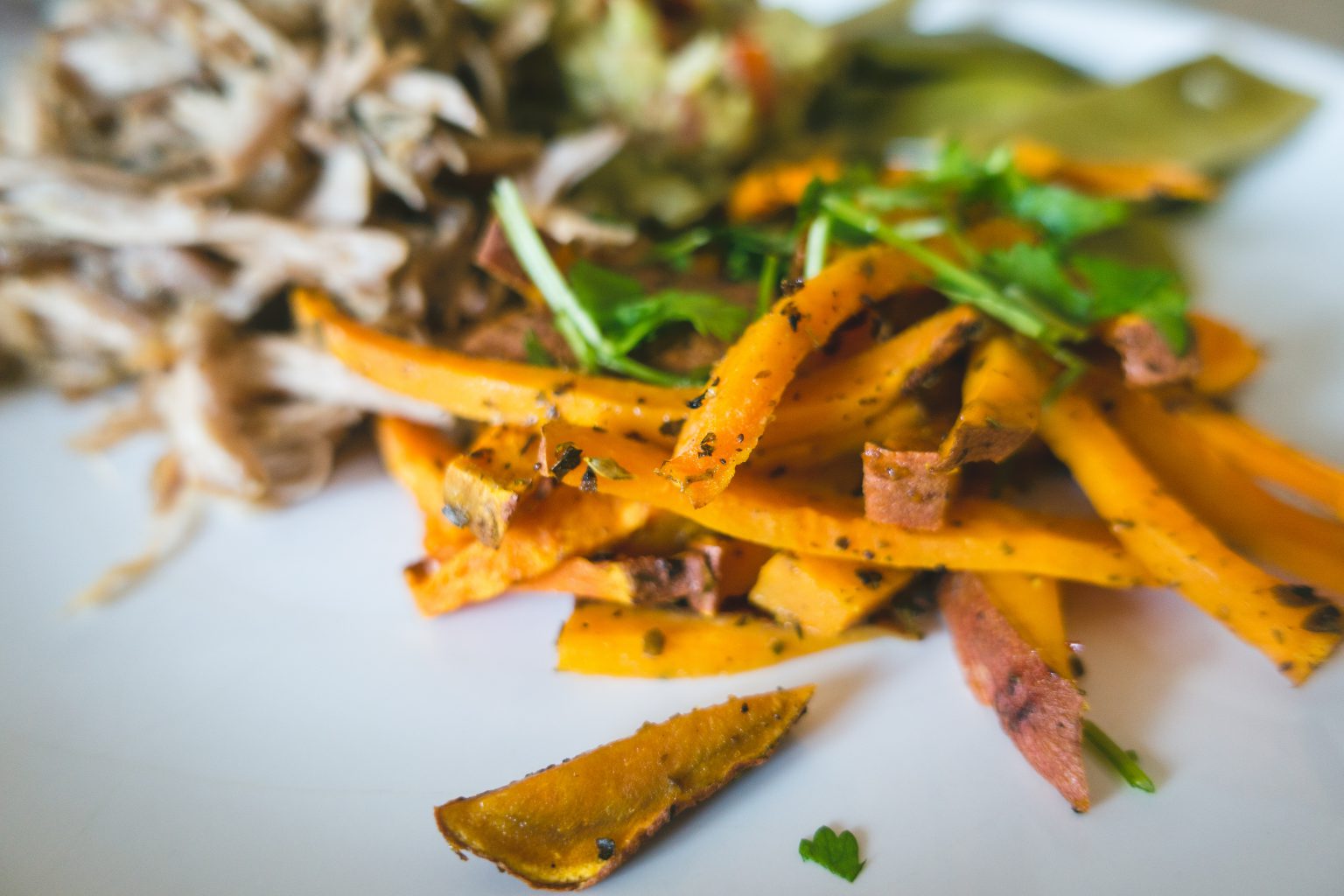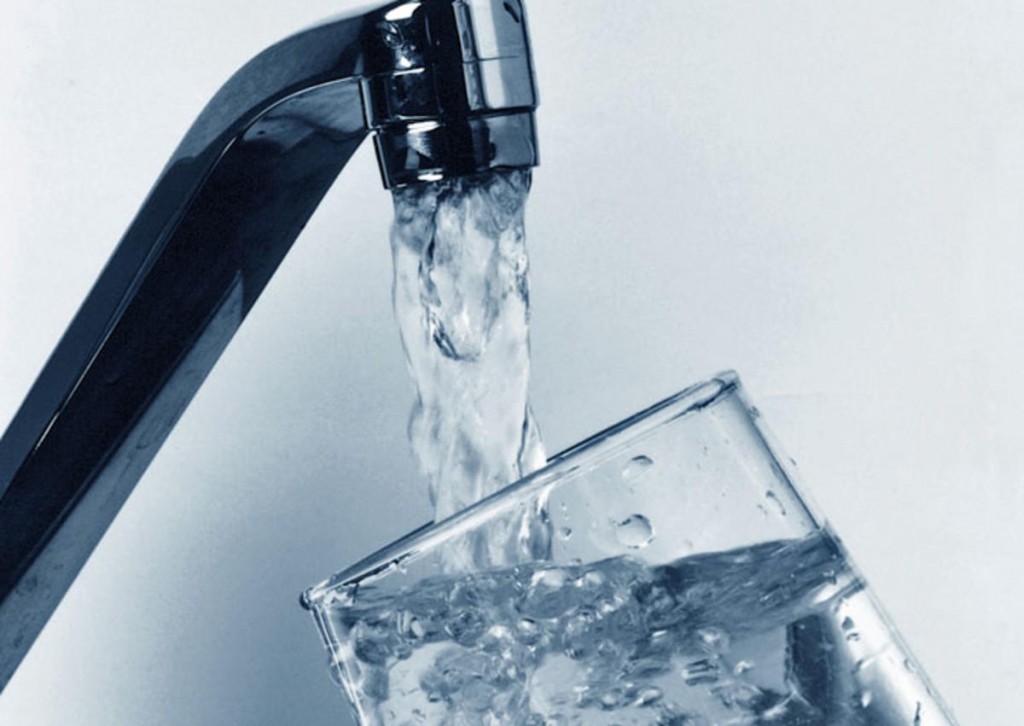This post was sponsored by Nestlé – Time for change in the Vijendranath household.
These past 3 months have been crazy for me… I’ve gotten sick more than 3 times and I think that one of the main reasons for that is because I haven’t been eating balanced meals.
To be honest, I’ve been just grabbing whatever I find in the fridge and I’ve been eating when I can (sometimes one meal a day) … I know, that’s terrible – especially since I am breastfeeding 2 kids!
Well, things are about to change in my kitchen especially now that the kids have eczema and a lot of allergies!
My main aim is to help everyone make better choices when it comes to food – which is actually easier than I thought.
To guide me on this journey, a professional chef, Kabelo Segone (Head of Department at HTA School of Culinary Art and Vice President of the South African Chefs Association) and a Nutritionist from Nestlé visited my home to educate me on how to Eat Smarter.
Nestlé’s Nutritionist explained what the correct serving size should be, and exactly what should be included in my children’s lunchbox.
Chef Kabelo taught me how easy it is to substitute certain foods for Kitana since she has a wheat allergy. They were simple tips like – swopping out pasta with starchy vegetables such as sweet potatoes.
I grew up eating mainly curry and rice so this is going to be a big change for me but I think I need it – especially for my health.
What does Eating Smarter mean?
Eating smarter means eating a varied and balanced diet to meet your body’s needs while getting value for money. This is something that doesn’t necessarily happen overnight because it can be a big lifestyle change.
It requires lots of planning.
You may end up spending time budgeting and searching for recipes but trust me in the end, it’s worth it. You will reduce food wastage and you will end up eating balanced meals with the correct serving size that has the nutrients you need.
A balanced diet contains plenty of fruit, vegetables, starches (such as whole wheat bread and whole grain cereals), some lean meats, nuts and milk products and small amounts of fats and sugars.
What I learned on the day:
- Grill, broil, bake or steam foods instead of frying.
- Cook with healthy oils such as olive, canola, and sunflower.
- Select low-fat or fat-free milk, yogurt, and cheese.
- Cut back on processed meats such as bacon.
What should an ideal plate for adults look like?

What should an ideal plate for kids look like?

Food substitutions for allergies and intolerances:
An example of an intolerance would be gluten intolerance. Gluten is a protein found in wheat, barley, and rye. Foods like bread, pasta, pizza, and breaded items would contain gluten.
It can be quite challenging to substitute food for kids with food intolerance. Instead of noodles, we used sweet potato for Kitana. You could also substitute with quinoa, corn, rice, or beans. Vegetables, fruit, nuts, seeds, lentils, eggs and unflavoured milk are naturally gluten-free.
Salt reduction:
Instead of having the salt and pepper on your table at meal times, include a bowl of fresh herbs, spices, and seeds that you can add to your meals for extra flavour.
Drink more water:
October 9-15 is Nutrition Week in South Africa and this year’s theme is Hydration.
It’s probably not the first time you’ve heard this, but that’s because it is an important aspect of maintaining a healthy body. To up your daily intake of water try to make it fruity and fresh by adding lemon slices, orange slices, cucumber, or mint. It looks better and tastes better than plain water making it easier to drink up during the day.
Get the kids involved:
Chances are that if they are involved in the cooking process (whether it is peeling potatoes or grating cheese) they may feel more involved and more likely to eat it! Plus, it’s a great way to spend some quality time together and can be educational too.
What to include in your child Lunchbox:
Add lots of colour – different coloured veggies and fruits give you different nutrients which are essential to a child’s development.
Choose better-for-you snack options such as cheese sticks, low added-sugar cereal bars, canned or fresh fruit, rice cakes, yogurt, crackers and vegetable sticks with dip.

An occasional treat – adding a small treat to a lunchbox every once in a while, will not only brighten up their lunch break but also serve as an opportunity to teach your little one about the correct serving sizes and the importance of eating in moderation.
For more lunchbox tips and tricks, and to learn about serving sizes visit www.nestlewellness.co.za
Kitana is a fussy eater and now that she has allergies (soy, wheat, grass, and nuts), it makes meal planning more difficult. I have learned a few tricks from Chef Kabelo and the Nutritionist who went through my kitchen cupboards and fridge to advise me on what could be made and what are the good products to keep on hand to whip up easy nutritionally balanced meals in minutes.
It was such an eventful day! Lots of laughs, tips and of course cooking!
When I go grocery shopping, I normally end up buying a whole bunch of ingredients without having a meal idea in my mind but after meeting Chef Kabelo, I realized how easy it is to whip up something delicious and nutritious.
It’s time for change:
I really enjoyed doing the Choose Wellness Choose Nestlé campaign mainly because it made me realize how important it is for me to change my eating habits.
- Instead of shopping monthly, I am going to shop weekly to make sure I get a variety of fresh vegetables, fish, and fruits for the family.
- Eat balanced meals and avoid skipping meals!
- I plan on taking evening strolls with the kids around the block.
- No work on weekends so that I can spend more time with the family and have some me-time.
When it comes to wellness, finding balance in all aspects of your life is important. This includes everything from understanding serving sizes to keeping active as well as effectively managing stress. It is a holistic journey which requires you to Eat Smarter, Move More in order to Live Better.








32 comments
I’m bookmarking this post, it comes at just the right time for me. I’ve been needing to change our health/eating habits for a while now, so this is a very useful post. 🙂
Thanks Charlene.
Copper scrap cost analysis Copper scrap annealing Copper scrap containers
Aluminium recycling distribution Aluminium scrap shipping Scrap aluminium reclamation process
Clean copper recycling Copper scrap seller Copper scrap alloying
Metal waste exchange Ferrous material appraisal Iron waste reclamation yard
Ferrous metal recycling plant, Iron recovery and repurposing, Metal reclaiming and reclaiming solutions
Aluminium price fluctuations Process of recycling aluminum scrap Aluminium machining scrap recycling
Metal recovery yard services Ferrous scrap diagnostics Recycling iron scraps
Ferrous metal recovery plant, Iron scrap recovery facilities, Metal recycling equipment
Metal recovery and repurposing Aluminium scrap transit logistics Aluminium scrap safety measures
Scrap metal analysis, Aluminum cable recycling methods, Metal waste
Metal waste sustainability Aluminium scrap pricing Aluminium scrap volume forecasting
Metal waste residue, Aluminum cables, Metal scrap reclamation and utilization
Efficient metal scrap handling Aluminium recycling center services Aluminium scrap pollution prevention
Scrap metal melting, Scrapping aluminum cable, Scrap metal disposal
Scrap metal baling Ferrous material recycling cost analysis Iron recycling center
Ferrous waste reclaiming solutions, Iron scraps reprocessing and recovery, Metal waste branding
Metal scrap reclamation plant Ferrous material recycling techniques Iron scrap collection services
Ferrous metal recovery facility, Iron scrap reclaiming and reuse, Scrap metal traders
Eco-friendly metal recovery Guidelines for aluminum scrap collection Aluminium recycling quality standards
Metal compaction services, Recycling aluminum electrical cables, Metal recovery industry
Sustainable metal reclamation Ferrous material shipping procedures Iron waste processing center
Ferrous material recycling strategy, Iron waste recycling and salvage, Metal waste repurposing and recycling
Metal waste traceability Aluminium recycling governance Aluminium scrap extrusion
Metal reclamation plant, Aluminum cable stripping tools, Metal scrap reclaiming services
Metal recycling salvage Ferrous material emergency response procedures Iron salvage and reclamation
Ferrous material recycling research, Iron scrap industry trends, Scrap metal value extraction
Metal scrap weighing Aluminium scrap remelting process Scrap aluminium market dynamics
Metal reclaiming and reutilization center, Aluminum cable recovery, Metal scrap sustainability
Scrap metal recapturing and recycling Ferrous metal reclaiming facility Iron scrap reclamation facilities
Ferrous metal repurposing, Iron disposal facility, Scrap metal recovery operations
Metal reclamation processing Scrap aluminium material separation Scrap aluminium recovery innovations
Metal scrap trading, Aluminum cable specifications, Scrap yard operations
Metal recycling industry updates Ferrous material recycling trends Scrap iron resale
Ferrous material recycling machinery, Iron recovery and reprocessing, Metal repurposing center
Metal waste compacting Aluminium recycling compliance Scrap aluminium byproduct reclamation
Metal scrap utilization, Recycle aluminum cables, Scrap metal facility
Copper scrap disposal regulations Copper waste management Copper scrap brokerage
Metal recovery and reclaiming, Copper chromate recycling, Scrap metal reclamation and recovery solutions
Exporting Copper scrap Copper has a long and illustrious history in the world of building and home decor. Dating back to ancient civilizations such as Egypt, Greece, and Rome, copper was used in a variety of applications, from roofing and plumbing to decorative sculptures and jewelry. One of the most significant uses of copper in history was its use in roofing. Copper roofs were popular among wealthy families in medieval Europe, and they continue to be used for high-end buildings today. Copper is known for its durability and resistance to weathering, making it an ideal material for roofs that need to withstand harsh climates and frequent exposure to the elements. Copper also has a unique appearance that sets it apart from other metals. Its warm, reddish-brown color develops a rich patina over time, giving it a distinctive and beautiful look. This patina is the result of the natural process of oxidation, which causes the copper to darken and take on a greenish hue. Many people find this natural progression of the metal to be aesthetically pleasing and desirable. In addition to its use in roofing, copper has been used in a variety of decorative applications throughout history. From sculptures and jewelry to vases and candlesticks, copper has been prized for its unique color and malleability. Its versatility as a material makes it a popular choice for designers looking to add a touch of warmth and texture to their creations. Today, copper is still widely used in building and home decor. From ceiling tiles and backsplashes to light fixtures and furniture, copper has made a resurgence in popularity in recent years. Its timeless appeal and durability make it a smart choice for those looking to invest in high-quality materials for their home or commercial space. Whether used in a traditional or modern context, copper continues to be a beloved material in the world of building and design. Its rich history and enduring beauty ensure that it will remain a staple in home decor for generations to come Metal scrap reprocessing plant Copper scrap industry analysis Recycling scrap Copper Copper wire scrapping Copper anode scrap acquisition Metal scrap traceability
Environmental certifications for copper recycling Copper is a metal. It is a chemical element with the symbol Cu and atomic number 29. It has a reddish-orange color and high thermal and electrical conductivity, making it a useful material for a wide range of applications. Copper is one of the few metals that is naturally found in its pure form as opposed to being alloyed with other metals. It is a relatively soft metal, which makes it easy to shape and mold into various forms. Due to its versatility, copper is used in a wide range of applications, from electrical wiring to building construction to ancient coins. One of the most significant uses of copper is in electrical wiring. Copper’s high electrical conductivity makes it an ideal material for conducting electricity without any significant loss in power. Copper wiring has been used for over a century and is still the most common material used today for electrical circuits. Copper is also commonly used in building construction because of its durability and resistance to corrosion. It can be used for pipes, gutters, roofing, and other parts of the building structure. It is also often used for decorative purposes, such as sculptures and ornaments. In addition to its practical uses, copper has been used throughout history for decorative and artistic purposes. Ancient civilizations used copper to create decorative objects like jewelry, coins, and religious artifacts. Today, copper continues to be used in art and sculpture due to its malleability and ability to take on unique patinas and finishes. Though copper is mostly used in its pure form, it can also be alloyed with other metals to create specialized materials. For example, brass is an alloy of copper and zinc, while bronze is an alloy of copper, tin, and other metals. In summary, copper is a widely used metal due to its high conductivity, malleability, and durability. It is used in a diverse range of applications, from electrical wiring to building construction to artistic expression Scrap metal reclaiming center Copper scrap dealer Copper scrap industry trends Copper scrap value Copper scrap market differentiation Scrap metal recycler
Metal recycling industry Ferrous scrap brokerage Iron scrap market analysis
Ferrous material product certification, Iron scraps recovery yard, Scrap metal recovery and reclaiming
Copper scrap payment terms Scrap copper extraction Scrap metal recycling yard
Copper cable recycling laws, Scrap metal recovery optimization, Scrap copper exporters
Metal waste warehousing, Copper scrap financing, Copper cable recycling export, Metal rejuvenation
Scrap metal recovery and reclaiming Scrap metal disposal yard Iron scrap disposal
Ferrous material certifications, Iron recuperation, Metal waste disposal
Scrap metal purchasing Ferrous waste recycling technology Iron scrap brokering
Ferrous recycling facility, Iron waste, Metal recycling and recovery
Metal recycling yard Ferrous material recovery techniques Iron scrap recuperation
Ferrous metal inspection, Iron waste recovery solutions, Metal recycling and recovery facility
Metal waste melting Ferrous metal reclamation and recycling Iron recycling and reclaiming
Municipal ferrous metal recycling, Iron scrap reclaiming strategies, Metal recyclable waste management
Metal processing machinery Ferrous material recycling education Scrap iron storage
Ferrous material reduction strategies, Iron reclaiming yard center services, Scrap metal waste reduction